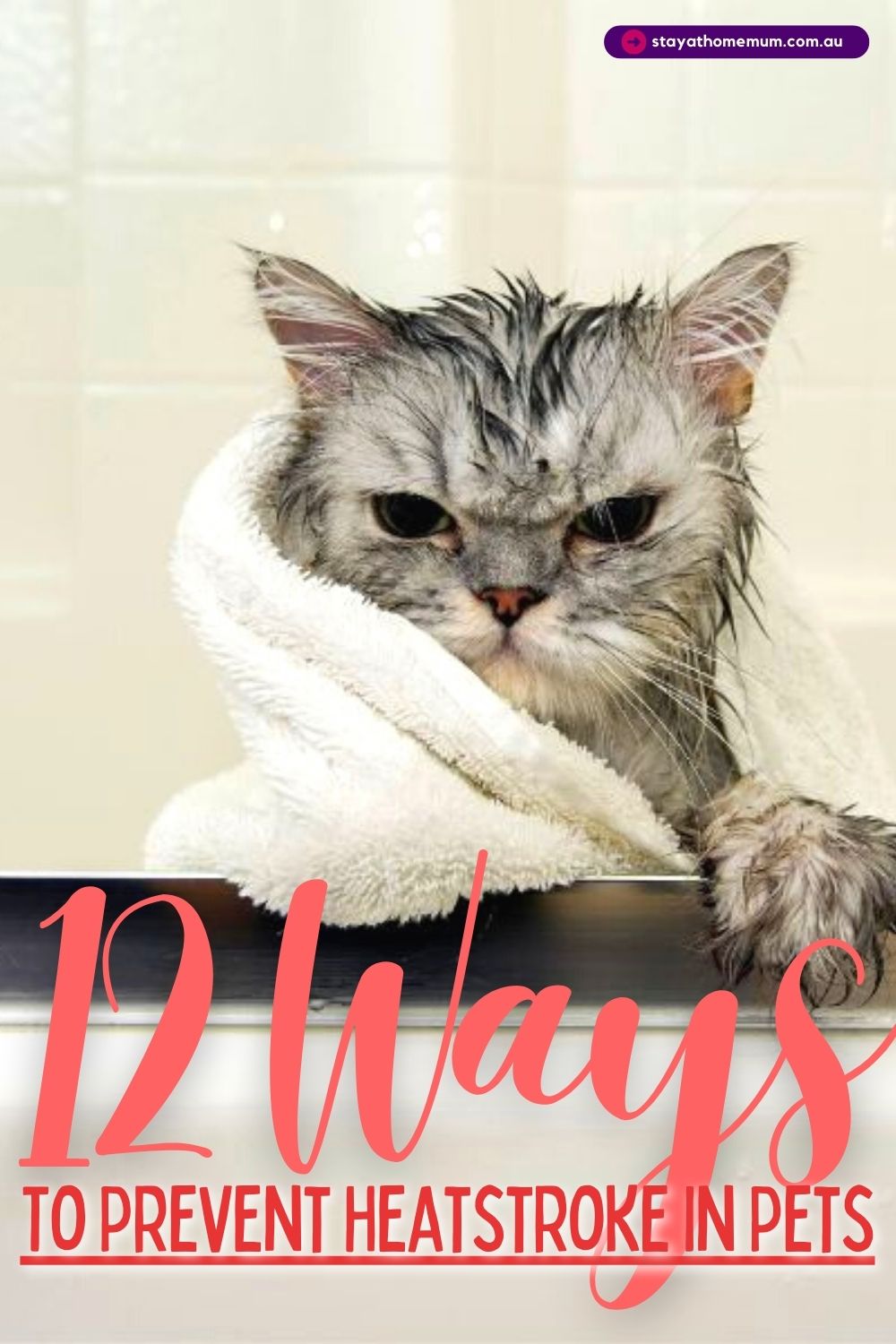
Summer is here and with it, the inevitable Australian heat.
There is often no relief from the sun for weeks at a time in summer, so it is important to monitor your pets to ensure that they do not overheat and end up suffering from heatstroke.
Heatstroke (also known as heat stress) in pets is when an animal can’t get rid of body heat as fast as they are building it up.
Heatstroke can result in your pet suffering from brain damage, multiple organ failure, and ultimately death.
More Reading:
| Table of Contents |
| What are the signs of heatstroke? |
| Signs of heatstroke in cats |
| Signs of heatstroke in dogs |
| Tips on preventing heatstroke in pets |
What are the signs of heatstroke?
The following are symptoms/signs that your pet may be suffering from heatstroke:
- Body temperature at 40 degrees or higher
- Fever
- Elevated heart rate
- Heavy panting, drooling
- Blank stare on their face
- Agitated or anxious behaviour
- Tongue and gums become brick red/dark and/or sticky
- Holding out its wings from its body and panting. Swaying unsteadily on their perch (birds only)
- Nausea and vomiting
- Wobbliness or staggering in movement
- Diarrhoea
- Seizure and/or Coma
Signs of heatstroke in cats
Signs of heatstroke in dogs
Tips on preventing heatstroke in pets:
1. Provide shade for your pets left outdoors.
If your pets are mainly left outdoors, provide ample shade for your pet to relax in.
2. Refill their water bowls.
Ensure that a few bowls of water is left out for your pet (routinely refilled with ice/cool water) and out of direct sunlight.

3. Move their enclosure to cool places.
For smaller animals typically housed in cages or hutches and are unable to relocate themselves to a cooler area on their own free will, it is highly recommended to be extra vigilant by monitoring their water containers and moving their enclosure to a well ventilated, cool and shaded place such as a laundry.
4. Spray water on your pet during hot days..
Hose/spray your pet with water regularly on hot days (although cats may not like this idea).
5. Choose the time to take them out for their regular exercise.
When exercising your pet, it is recommended to take them early in the morning or very late in the afternoon.
6. Keep your pet indoors when temperature gets too hot.
On days where the temperature soars above 30 degrees, it is preferable to keep your pet indoors.
7. Make a huge pet ice block.
You can do this by freezing some of their toys in water in the largest tub that fits in your freezer. They will love it. Remove by running tub under hot water.
8. Never leave your pet in the car.
Big NO!
If you believe your pet has heatstroke…
It’s is important to act quickly to lower their body temperature and prevent further damage (if any) to their body’s internal organs.
9. Move your pet to a cooler dark area.
You can place them in the bathroom or laundry in your home.
10. Stand your pet in some water.
If possible, have your pet stand or sit in some shallow water in a bathtub, kiddie play pool or small container. They will enjoy the cooler water on their legs and might like having a splash around!
11. Do not give your pet ice-cold water!
This dramatic change in temperature can be an added shock to their system. For dogs, it is recommended to focus on continually keeping their feet damp as this is where they expel most of their heat.
12. Try to coax your pet to drink more water.
If you think your pet has heatstroke or you would like to know more about prevention for your particular type of pet, contact your local vet.
Make it a priority to keep your pets cool and safe!









 Top 14 Online Adult Shops in Australia
Top 14 Online Adult Shops in Australia  List of Environmentally Friendly Disposable Nappies (and...
List of Environmentally Friendly Disposable Nappies (and...  List of the Best Weight Loss Shake...
List of the Best Weight Loss Shake...  Where to Buy Wholesale Vibrators to Sell...
Where to Buy Wholesale Vibrators to Sell...  Our Honest Bed Threads Review 2021
Our Honest Bed Threads Review 2021 



